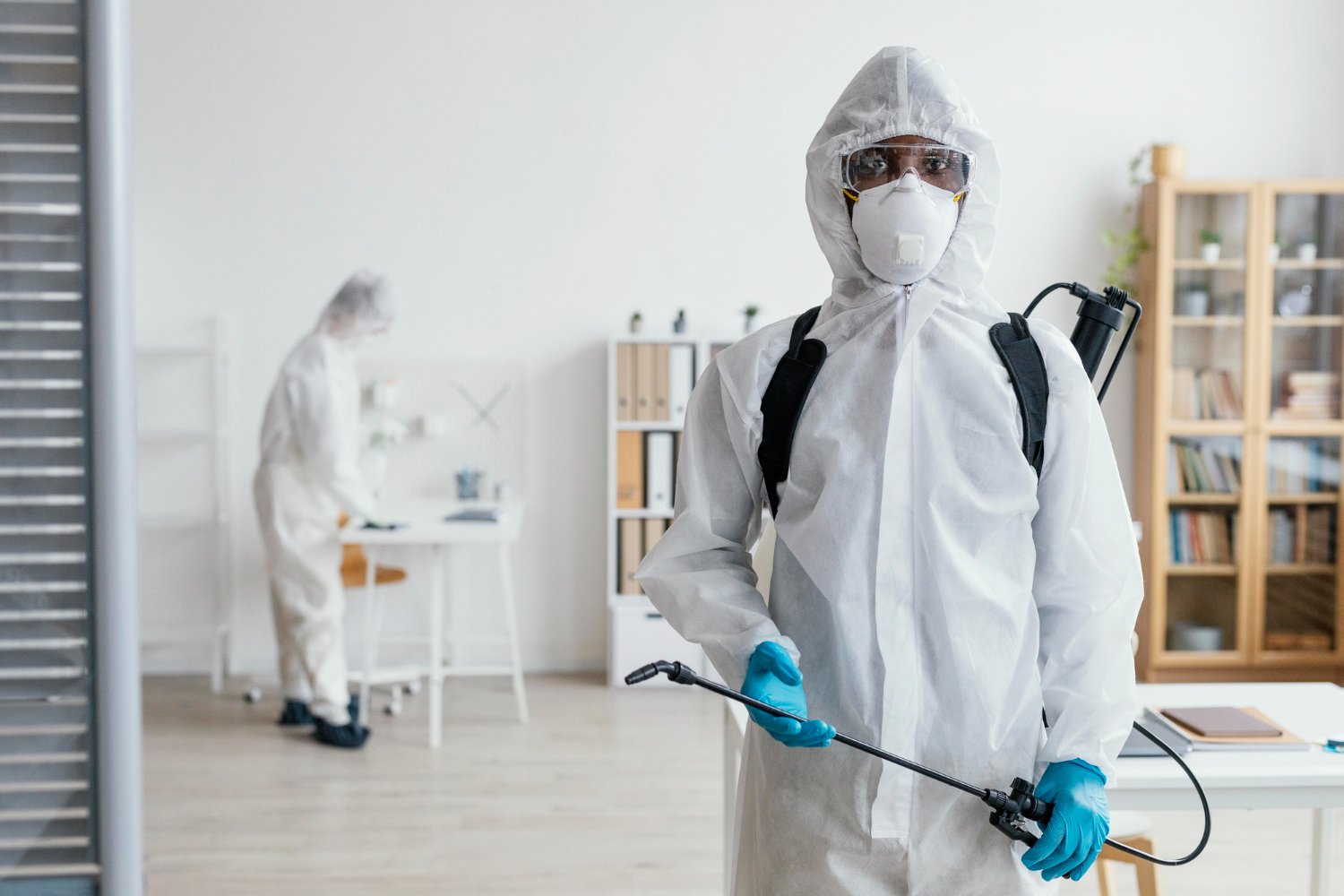Bed Bug Treatment Malfunction: Comparing Chemical Vs. Non-Chemical Solutions
In the realm of insect control, especially when handling the consistent problem of bed pests, the option between chemical and non-chemical therapy services can be an essential one. Both approaches supply distinct advantages and downsides, affecting aspects such as efficiency, safety considerations, and total price. By checking out the nuanced details of each approach, a clearer understanding of which course to pursue in attending to a bed bug infestation can be achieved.
Performance of Chemical Treatments
Chemical treatments for bed insect infestations have been commonly identified for their rapid and powerful efficacy in eliminating these bugs. When thinking about the performance of chemical therapies, it is vital to comprehend that they can supply a extensive and fast remedy to a bed insect problem. Specialist pest control men typically count on insecticides to target bed pests at different stages of their life cycle, consisting of adults, eggs, and nymphs. These chemicals usually function by interfering with the bed insects' nerves, leading to paralysis and ultimate death.
In addition, chemical therapies have the benefit of supplying recurring effects, indicating that they can proceed to remove bed pests even after the first application. This recurring action is particularly helpful in combating any kind of possible re-infestations. Furthermore, the fast action of chemical treatments can bring alleviation to individuals facing extreme bed pest infestations, permitting them to regain control of their living spaces quickly.
Security Worry About Chemical Solutions
One critical facet that needs cautious consideration when utilizing chemical remedies for bed insect treatment is guaranteeing the safety of owners and the environment. While chemical therapies can be effective in eradicating bed bugs, they might position dangers if not managed properly. Among the primary security worry about chemical solutions is the potential harm they can create to human health. Direct exposure to certain chemicals used in bed pest therapies can bring about breathing issues, skin inflammation, or various other negative reactions, particularly in individuals with pre-existing problems or sensitivities. Furthermore, inappropriate application or dosage of chemical pesticides can lead to poisonous residues remaining in the cured area, posing long-lasting health threats to passengers.
Furthermore, the environmental influence of chemical options is one more considerable consideration. Some pesticides made use of in bed insect therapies might be unsafe to useful pests, wildlife, and environments if they seep right into the dirt or water supply. It is essential to utilize chemical therapies carefully, complying with safety guidelines, and taking into consideration much less harmful options to mitigate these risks and make sure the effective and safe management of bed pest problems.
Benefits of Non-Chemical Strategies
Considering the prospective safety worries and ecological impact connected with chemical options for bed bug treatment, exploring non-chemical methods offers an encouraging alternative with a number of distinct advantages. Non-chemical treatments are eco friendly, as they do not add to air or water pollution, making them a lasting option for parasite control.
Additionally, non-chemical services can be reliable in targeting bed bugs, consisting of hard-to-reach areas where chemical therapies may not pass through - A1 exterminators charlotte nc. Approaches such as warm treatment, vacuuming, vapor cleansing, and cushion encasements give thorough eradication without the use of damaging chemicals.
Limitations of Non-Chemical Treatments

Additionally, non-chemical treatments typically need multiple applications to accomplish successful removal. This can be time-consuming and might not constantly guarantee full elimination of all bed insects and their eggs, specifically in hidden or hard-to-reach locations.
In addition, the success of non-chemical therapies greatly counts on appropriate implementation and thoroughness, which can be testing for people without professional experience. Insufficient application of non-chemical methods might lead to insufficient obliteration, bring about consistent problems and the demand for additional treatments.
For that reason, while non-chemical therapies have their advantages, it is important to acknowledge these restrictions and consider them when establishing the most reliable technique for taking care of bed insect infestations.
Cost Comparison: Chemical Vs. Non-Chemical Options
Offered the limitations related to non-chemical therapies, a vital aspect to examine in the context of bed pest administration is the cost contrast in between chemical and non-chemical alternatives. Chemical treatments typically involve the application of insecticides by professionals, which can range from $250 to $900 per area, depending upon the intensity of the infestation and the dimension of the location to be treated. On the other hand, non-chemical therapies like warm treatment or heavy steam can be much more expensive, with expenses ranging from $1,000 to $6,000 for a whole home. read this article While the first expense of chemical treatments may seem reduced, several treatments might be required to fully eradicate the invasion, possibly enhancing the general cost. On the other hand, non-chemical alternatives may offer a much more environment-friendly and lasting remedy, although they can be cost-prohibitive useful content for some people. Ultimately, when considering the cost of bed pest treatment alternatives, it is necessary to weigh the ahead of time expenses against the effectiveness and lasting sustainability of the picked method.
Conclusion

Thinking about the possible safety issues and environmental influence linked with chemical remedies for bed bug treatment, discovering non-chemical techniques presents an appealing alternative with numerous distinctive benefits.Offered the limitations connected with non-chemical treatments, an important element to examine in the context of bed pest administration is the cost contrast between chemical and non-chemical options. In comparison, non-chemical treatments like heat therapy or vapor can be much more costly, with expenses ranging from $1,000 to $6,000 for a whole home. While the initial price of chemical treatments may appear lower, multiple treatments might be called for to completely eliminate the problem, possibly increasing the general price.In verdict, when comparing chemical and non-chemical bed insect treatment alternatives, it is important to consider effectiveness, security, benefits, constraints, and cost.